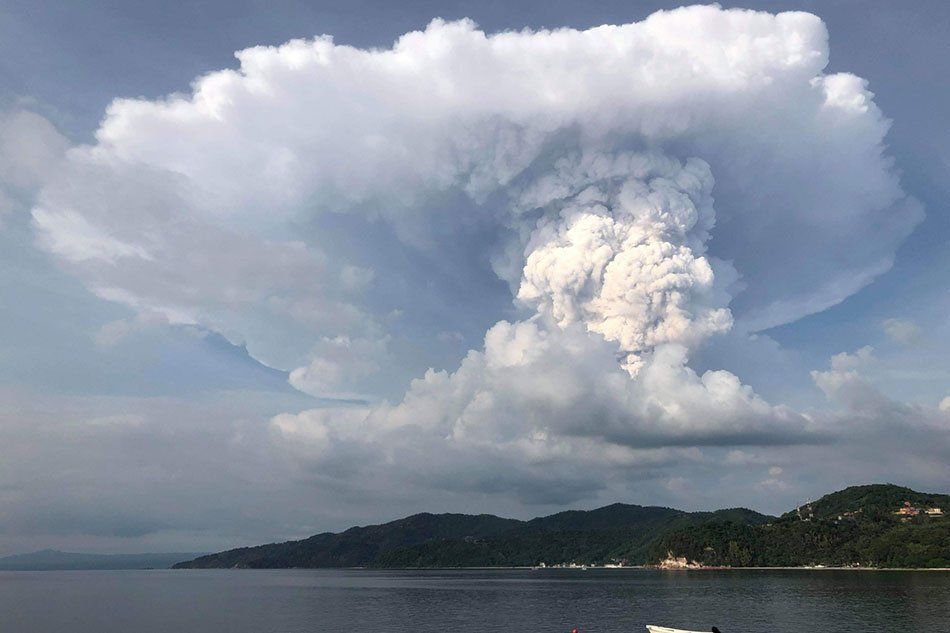
This is a notice of slightly increased seismic activity and Main Crater Lake changes at Taal Volcano.
Taal Volcano’s monitoring network recorded a series of fifty (50) relatively weak tremor episodes beginning 5:00 AM until 3:00 PM today, 15 February 2021. These tremor episodes ranged in duration from two (2) to five (5) minutes and occurred at shallow depths of <1km, signaling increased hydrothermal activity beneath Taal Volcano Island (TVI). Since 13 February 2021, a total of sixty-eight (68) shallow tremor episodes have occurred in TVI. Furthermore, geochemical data on the Main Crater Lake indicate a continuous acidification of lakewater from a pH 2.79 to pH 1.59 between January 2020 and February 2021, an unseasonal temperature high of 77ºC and CO2/H2S gas flux ratios consistent with shallow magma degassing. Ground deformation data from continuous electronic tilt on Volcano Island record a slight deflation localized around the Main Crater, although very slight inflation from GPS data and InSAR analysis and positive microgravity changes have been steadily recorded across the Taal region consistent with continuous magmatic degassing and hydrothermal unrest.
The public is reminded that Alert Level 1 (Abnormal) prevails over Taal Volcano and that presently, there are increased possibilities of sudden steam-driven or phreatic explosions, lethal accumulations or expulsions of volcanic gas and minor ashfall from the Main Crater that can occur and threaten areas within TVI. DOST-PHIVOLCS strongly recommends that entry into TVI, Taal’s Permanent Danger Zone or PDZ, especially the vicinities of the Main Crater and the Daang Kastila fissure, must remain strictly prohibited. Local government units are advised to continuously assess previously evacuated barangays around Taal Lake for damages and road accessibilities and to strengthen preparedness, contingency, and communication measures in case of renewed unrest. People are also advised to observe precautions due to possible ashfall, ground displacement across fissures and minor earthquakes in the event of a phreatic eruption. Civil aviation authorities must advise pilots to avoid flying close to the volcano as airborne ash and ballistic fragments from sudden explosions and wind-remobilized ash may pose hazards to aircraft. DOST-PHIVOLCS is closely monitoring Taal Volcano’s activity and any new significant development will be immediately communicated to all stakeholders.
DOST-PHIVOLCS






